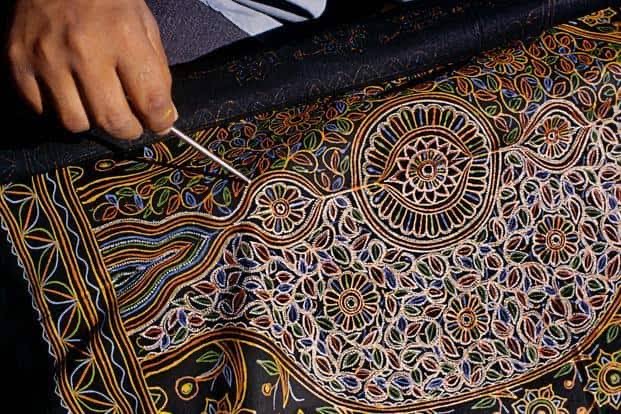Over the years of globalization and industrialization, many art forms, especially those that require handicraft skills have come to extinction or have been looked over in favour of machine-made items. One such art form that hails from the Kutch region of Gujarat, is known as Rogan art. The Rogan art form is so rare that apparently, only one family has continued the tradition of Rogan art painting and printing in the entire Indian subcontinent. But why did it get to the position of where it is now?
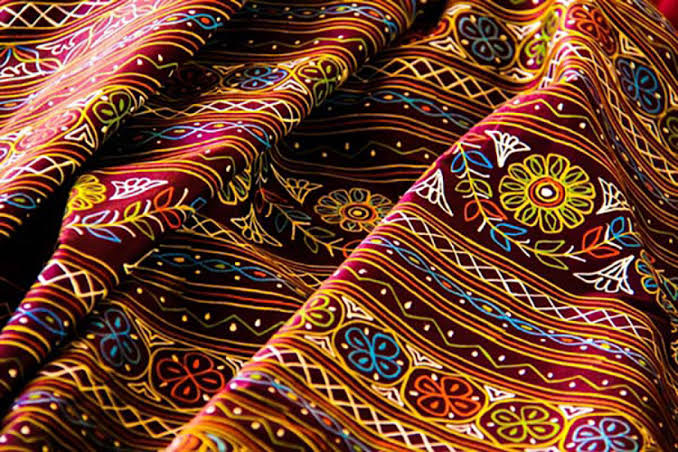
A fairly popular art form, Rogan art is used for decorating Odhni, Ghagra, Chabla, Darajo, and Rogan art dresses. Rogan art products like bed sheets, pillow covers, quilts etc., have now become textile wall art due to ignorance and lack of awareness.
Rogan Art History
If we were to take a deep dive into the Rogan art history, we would notice that traditionally, the popularised Rogan art Kutch was brought around 300 years ago from Persia. Although there is no historical evidence suggesting this, it is believed that the art form might have originated in Syria around 400 years ago and travelled through Persia and Afghanistan to India in the states of Gujarat and an undivided Punjab. The Pathan community and the Afridis were believed to be the practitioners of Rogan art, but many contradict it by saying that only the Khatri community carried out this craft.
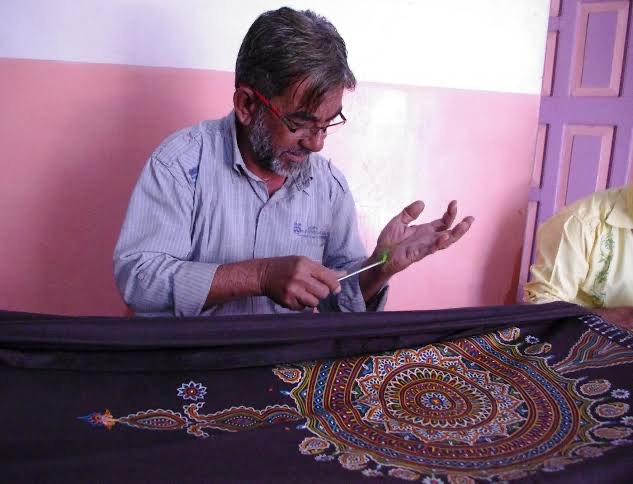
Courtesy: Traditional Rogan art
Today, the only generation of the family that has preserved this art form and is spreading awareness about it is the family of Abdul Gafur Khatri from the Nirona village of Kutch. Khatri, being a Padma Shri, had once thought of abandoning the art form due to the lack of monetary support it received. But, with time, he understood the value of preserving a family tradition and backed several awards motivating several others from his own family and village to practice the dying Rogan art.
Rogan Art Painting
Rogan literally translates to oil in Farsi. As the name implies, the primary material that is used to make Rogan art paintings is oil. In a container, a large quantity of castor oil (popular in Gujarat) is heated until it attains a thick and gooey texture, resembling honey. The step proves to be a dangerous one as heating oil in large batches can lead to fire hazards. The next step is to incorporate pigment in the oil. Earlier primary colours and earth tones were used to prepare the Rogan art painting colours but with time, myriad colours and shades proliferated the tradition. With the help of a muller, pigment is mixed into the thick oil and then placed into a bowl of water.
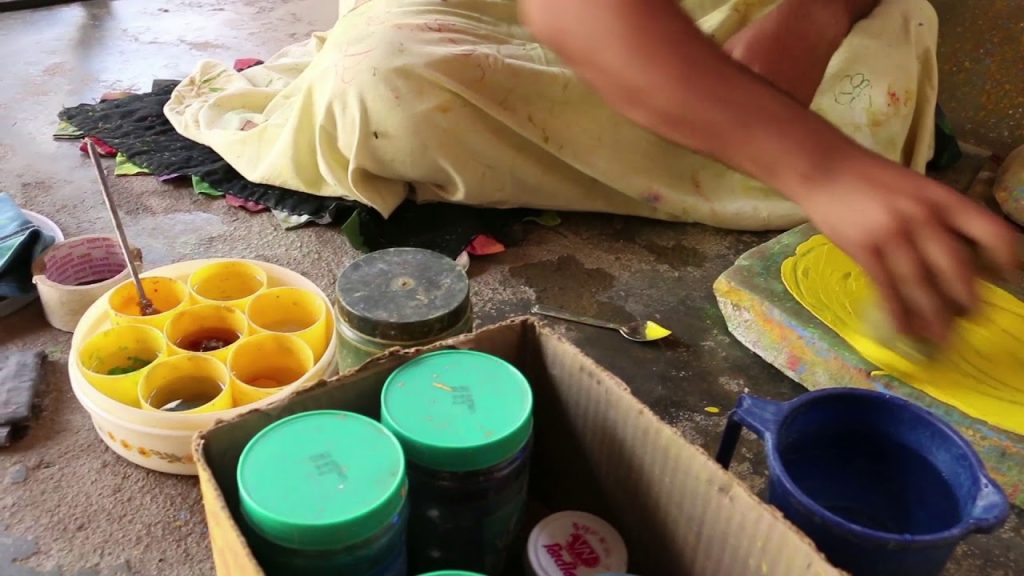
Courtesy: Anand Surya Sathyamurthy via YouTube
It is now that the real work begins. With the help of an iron rod, known as kalam, the paint is placed into the artist’s hand and mixed well until it can be easily manoeuvred. Defying the rules of traditional art and even physics, the design of Rogan art painting does not take place on the fabric but in the air. The artisan has a design in his mind, according to which he guides the rod to make the desired shape, printing it into the fabric. The last step is to fold the cloth to mirror the design.
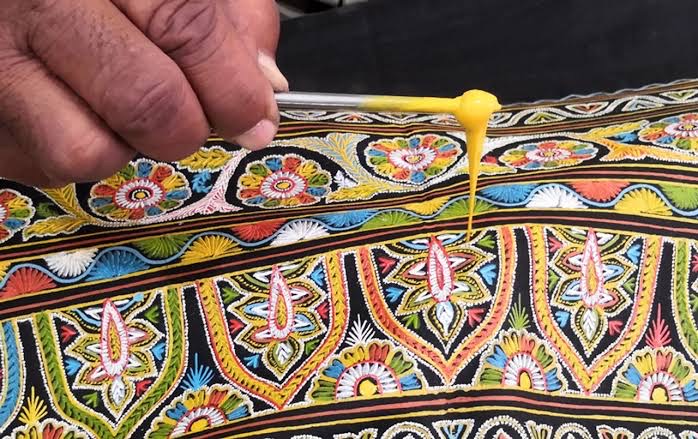
The process of making Rogan Art products is hectic and can take up to 2 years to be completed depending on the complexity of the decoration. While simple designs can take a week to be finished, mastery over the complicated Rogan art takes years. Another factor includes the size of the cloth. If it is a Rogan art saree, the time taken is humungous as opposed to Rogan Art products such as a pillowcase or handkerchief.
For this reason, many artists have abandoned the practice, unable to compete with the fast printing machines. The cheaper alternatives of machine works also declined the demand for such handmade timetaking goods leading many more to find other ways of employment than wasting their efforts on reviving a dying craft. Although today, Abdul Khatri and many like him have managed to preserve and spread this art successfully, the lack of awareness has demotivated many young artists of this generation to discontinue this traditional art form.
Image Courtesy – Mint

Pratiksha is an art enthusiast and writer.

